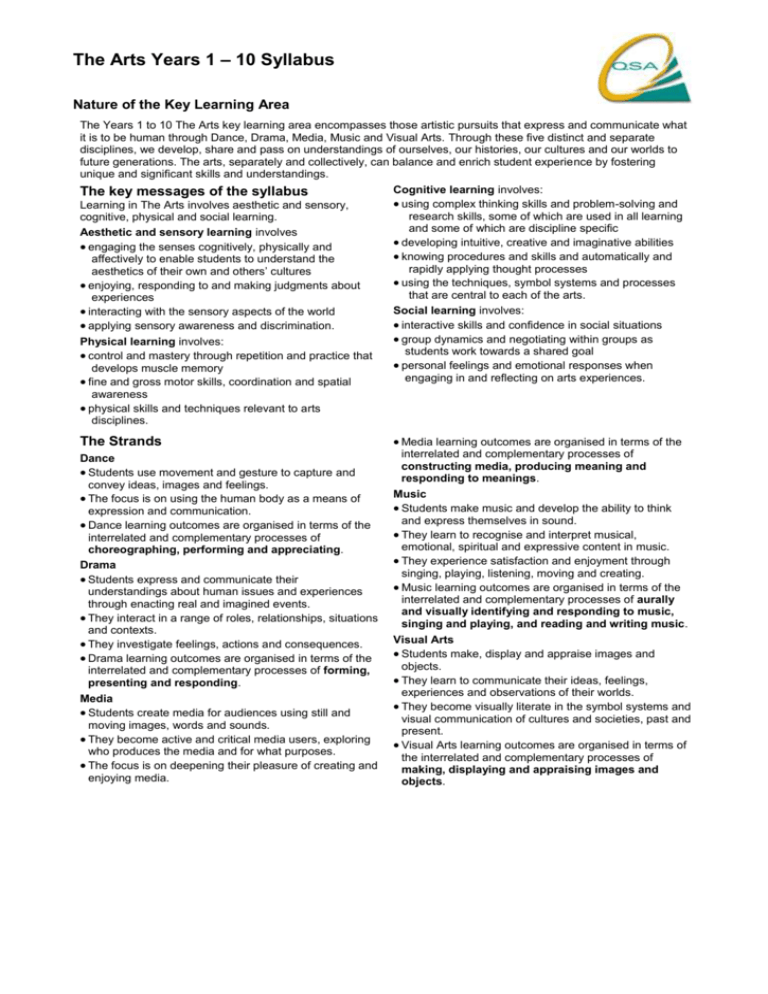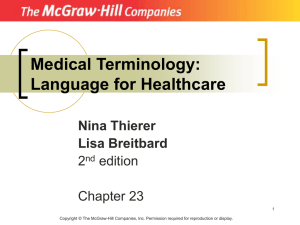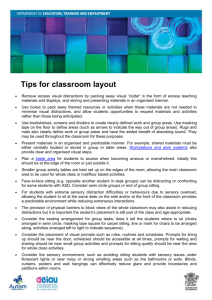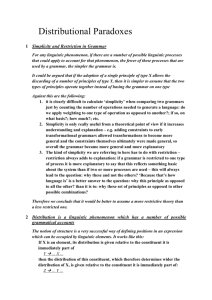The Arts Years 1 * 10 Syllabus (2002)
advertisement

The Arts Years 1 – 10 Syllabus Nature of the Key Learning Area The Years 1 to 10 The Arts key learning area encompasses those artistic pursuits that express and communicate what it is to be human through Dance, Drama, Media, Music and Visual Arts. Through these five distinct and separate disciplines, we develop, share and pass on understandings of ourselves, our histories, our cultures and our worlds to future generations. The arts, separately and collectively, can balance and enrich student experience by fostering unique and significant skills and understandings. Cognitive learning involves: The key messages of the syllabus using complex thinking skills and problem-solving and Learning in The Arts involves aesthetic and sensory, research skills, some of which are used in all learning cognitive, physical and social learning. and some of which are discipline specific Aesthetic and sensory learning involves developing intuitive, creative and imaginative abilities engaging the senses cognitively, physically and knowing procedures and skills and automatically and affectively to enable students to understand the rapidly applying thought processes aesthetics of their own and others’ cultures using the techniques, symbol systems and processes enjoying, responding to and making judgments about that are central to each of the arts. experiences Social learning involves: interacting with the sensory aspects of the world interactive skills and confidence in social situations applying sensory awareness and discrimination. group dynamics and negotiating within groups as Physical learning involves: students work towards a shared goal control and mastery through repetition and practice that personal feelings and emotional responses when develops muscle memory engaging in and reflecting on arts experiences. fine and gross motor skills, coordination and spatial awareness physical skills and techniques relevant to arts disciplines. The Strands Media learning outcomes are organised in terms of the Dance Students use movement and gesture to capture and convey ideas, images and feelings. The focus is on using the human body as a means of expression and communication. Dance learning outcomes are organised in terms of the interrelated and complementary processes of choreographing, performing and appreciating. Drama Students express and communicate their understandings about human issues and experiences through enacting real and imagined events. They interact in a range of roles, relationships, situations and contexts. They investigate feelings, actions and consequences. Drama learning outcomes are organised in terms of the interrelated and complementary processes of forming, presenting and responding. Media Students create media for audiences using still and moving images, words and sounds. They become active and critical media users, exploring who produces the media and for what purposes. The focus is on deepening their pleasure of creating and enjoying media. interrelated and complementary processes of constructing media, producing meaning and responding to meanings. Music Students make music and develop the ability to think and express themselves in sound. They learn to recognise and interpret musical, emotional, spiritual and expressive content in music. They experience satisfaction and enjoyment through singing, playing, listening, moving and creating. Music learning outcomes are organised in terms of the interrelated and complementary processes of aurally and visually identifying and responding to music, singing and playing, and reading and writing music. Visual Arts Students make, display and appraise images and objects. They learn to communicate their ideas, feelings, experiences and observations of their worlds. They become visually literate in the symbol systems and visual communication of cultures and societies, past and present. Visual Arts learning outcomes are organised in terms of the interrelated and complementary processes of making, displaying and appraising images and objects.






